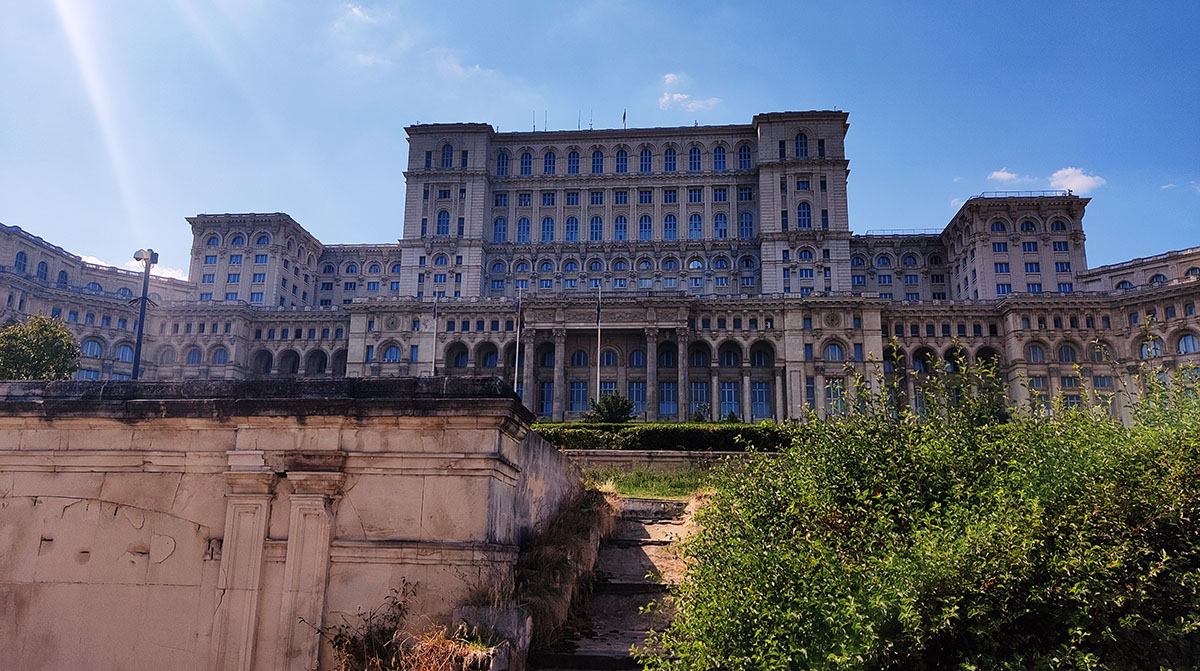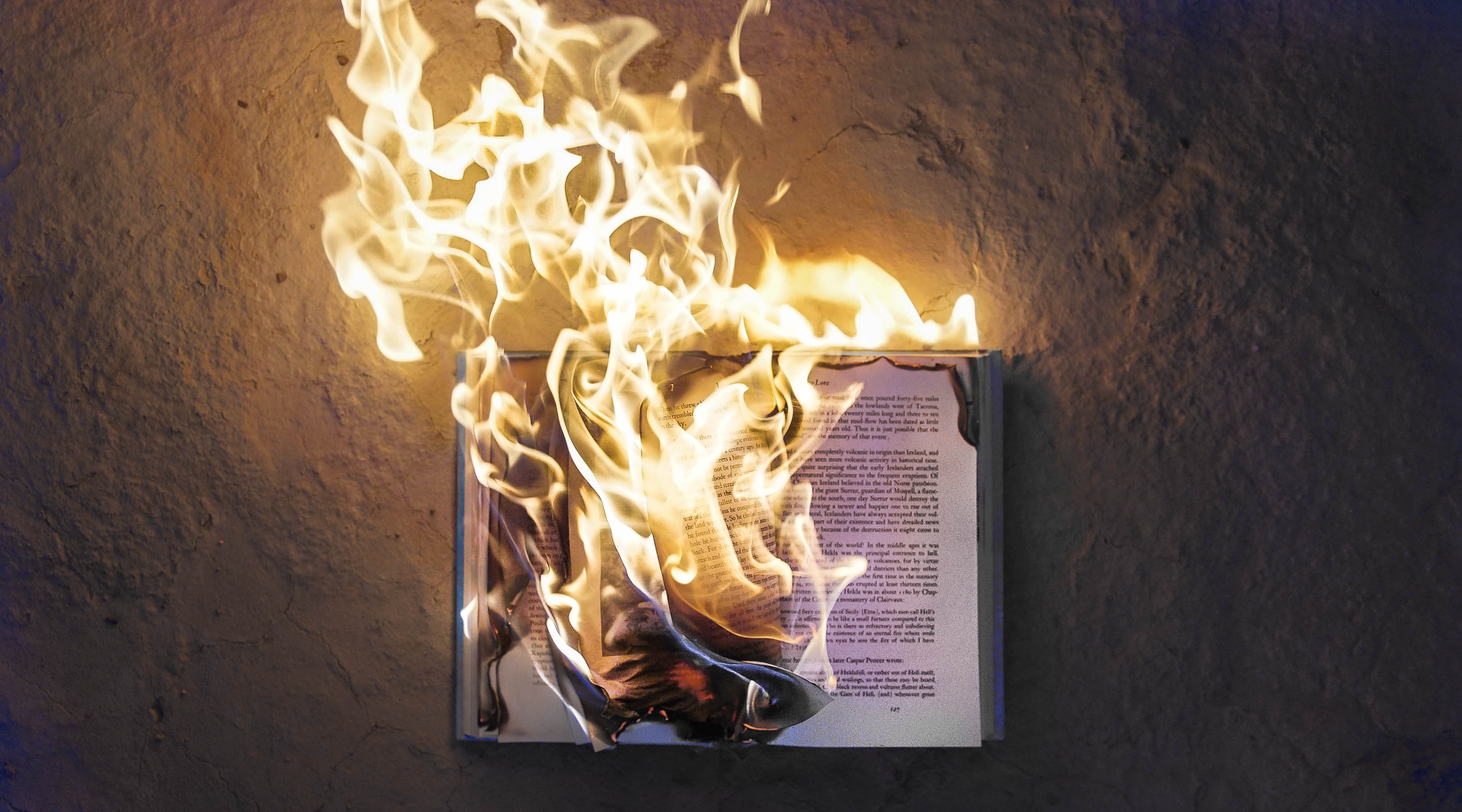Symphony
2021
In late summer 2018, one evening in Bucharest, I was told the full story of how the Romanian dictator Ceaușescu built his vast "People's Palace" in the city, destroying the Uranus district of old Bucharest and displacing many people. The brutal building - inspired by the Socialist realist architecture of North Korea - remains, even after the revolution which removed Ceaușescu, dominating the landscape: a reminder and lesson from history. The story moved me deeply and ultimately resulted in this symphony - composed for the George Enescu Festival, and performed for the first time in the 2021 Festival.
I wanted to capture the essence of a culture, idea, or people subject to forceful destruction and displacement: but also to tell the more hopeful and optimistic story of that culture and idea living on. Essentially to show, through music, that ideas, once expressed, cannot be destroyed.

Ideas, once expressed, cannot be destroyed.
This symphony tells the story of an idea. Appearing out of nowhere, this idea is seized upon, elaborated, pulled every which way, and celebrated. Night falls; a nightmare disturbs pleasant rest. But the idea resurfaces, and with it, the disturbing vision is banished. A new day; a bucolic, Arcadian festival: innocent fun – over which hangs the shadow of the nightmare. It is made manifest. Fear and terror ensue. But against suppression, against wanton destruction, and despite the depredations of power and even time itself, that old idea remains, unchanged, at the last.

I wrote this Symphony for the George Enescu Festival, where it received its first performances and broadcasts in September 2021 with the Banatul Philharmonic conducted by Rumon Gamba, in both Timisoara and Bucharest.
Reflection on 2022 invasion of Ukraine
As shock and strong emotion spread across the world in February and March of 2022 at the invasion of Ukraine, I realised that once again, history repeats itself, and once again, ideas and cultures are under threat of destruction. And once again, it will be impossible to destroy those idea and that culture. That this should happen again in a part of the world very close to Romania is coincidental, but strongly resonant with the motivation behind this symphony.
Composition during the 2020-2021 Covid Pandemic
The work was composed during the 2020-2021 Covid pandemic and lockdown. Working on such a large project, adding a little every day, sustained me through the many months of lockdown and depressing daily news. While the piece is not intended as a direct commentary on this time, nonetheless my strong feelings and emotions experienced during this period in history must inevitably be bound up in the piece: the curtailment of freedom, the seemingly unstoppable spread of the disease, the deaths, the false dawns - and for me, acutely, the loss of live music, especially singing. It is therefore perhaps natural for the listener to project their own feelings about that terrible year onto the music, and if so I hope that within the music, they will to find reassurance, meaning, and answers to their private questions about this time.
Movements
The symphony is in four movements of roughly equal duration. Together, the movements suggest a story, but it's a story that is more symbolic than a literal narrative. The themes of the story are creation and destruction (of ideas), and "change" - how some things can remain constant and somehow true, even in the face of destructive forces.
The first movement consists of an extended theme and development, and concludes with a Ballo, a depiction of a celebratory event. The second movement, Nocturne, is a nightmare rather than a pleasant piece of "night-music", but the nightmare is driven off by the musical force of the theme heard during the first movement. The third combines dances which are given the names Rustick, Alegrias, and Bal musette, and which are imaginary dances, suggestive of traditional European forms. Finally, the fourth movement is at first nostalgic and full of pathos, but becomes violent as a musical destruction is unleashed upon the various dances and celebrations which have been heard up to that point.
Ultimately, the original theme of the first movement returns as a memory left behind after the violence and destruction. It represents the idea which cannot be destroyed - an extremely simple idea, perhaps an axiom - which is given to the listener at the beginning and end of the piece by the open strings of a solo violin.
Lento - Andante, tranquillo - Allegro - Ballo, con brio
Nocturne. Mysterioso - Molto tranquillo - Agitato - Calmo
Rustick. Molto vivo - Alegrias. Molto allegro - Rustick. Meno mosso - Bal musette. Grazioso - Alegrias
Poco adagio - Presto, agitato - Molto agitato - Triste, rubato - Molto allegro - Molto meno mosso
Style
Stylistically, the music is reminiscent of the symphonic writing of both Shostakovich and Rachmaninov, both of whom I freely admit are strong influences. However, among the melodic material and more or less tonal harmonies, two (or more) keys are often present simultaneously - reminding me of a third Russian who is also influential on my writing: Schnittke. By starting with a musical language that is basically familiar and which feels accessible to many (thanks, not least, to film music, perhaps!), I hope that the listener of my Symphony is able to focus at least as much on what I am saying, as on how I am saying it.
Duration
c. 40 minutes
Instrumentation
picc, 2fl, 2ob, 2cl, 2bsn, cbsn; 4hn, 3tpt, 2tbn, btbn, tuba; timp; 2perc; strings
Commission
The Enescu Festival
First performance
9th September 2021, Timisoara, with the Timisoara Banatul Philharmonic and Rumon Gamba
Video
World premiere at the 2021 George Enescu Festival, Bucharest, Romania with Rumon Gamba and the Banatul Philharmonic of Timisoara
I. Lento - Andante, tranquillo - Allegro - Ballo, con brio
II. Nocturne
III. Rustick - Alegrias - Rustick - Bal musette - Alegrias
IV. Adagio - Presto, agitato
Request a score / parts
If you would like to see a score and/or require a set of parts for this music, please contact me.